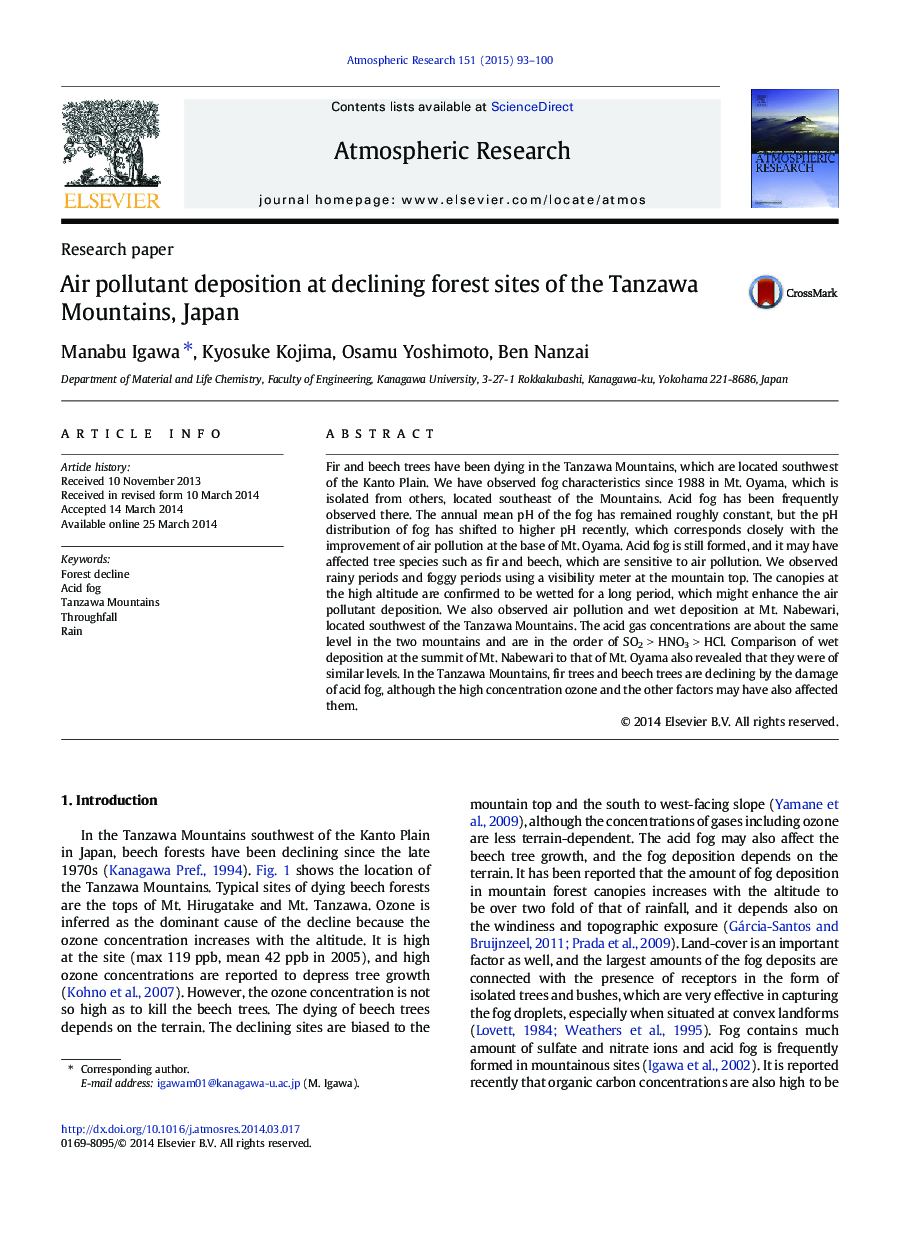| Article ID | Journal | Published Year | Pages | File Type |
|---|---|---|---|---|
| 4449775 | Atmospheric Research | 2015 | 8 Pages |
•We observed wet and dry deposition in the Tanzawa Mountains southwest of the Kanto Plain.•The pH of the fog in the mountains has remained constant for over 20 years.•High altitude canopies are affected by the deposition of acid fog.•Fir and beech trees in the mountains are declining from the damage by some factors including acid fog.
Fir and beech trees have been dying in the Tanzawa Mountains, which are located southwest of the Kanto Plain. We have observed fog characteristics since 1988 in Mt. Oyama, which is isolated from others, located southeast of the Mountains. Acid fog has been frequently observed there. The annual mean pH of the fog has remained roughly constant, but the pH distribution of fog has shifted to higher pH recently, which corresponds closely with the improvement of air pollution at the base of Mt. Oyama. Acid fog is still formed, and it may have affected tree species such as fir and beech, which are sensitive to air pollution. We observed rainy periods and foggy periods using a visibility meter at the mountain top. The canopies at the high altitude are confirmed to be wetted for a long period, which might enhance the air pollutant deposition. We also observed air pollution and wet deposition at Mt. Nabewari, located southwest of the Tanzawa Mountains. The acid gas concentrations are about the same level in the two mountains and are in the order of SO2 > HNO3 > HCl. Comparison of wet deposition at the summit of Mt. Nabewari to that of Mt. Oyama also revealed that they were of similar levels. In the Tanzawa Mountains, fir trees and beech trees are declining by the damage of acid fog, although the high concentration ozone and the other factors may have also affected them.
